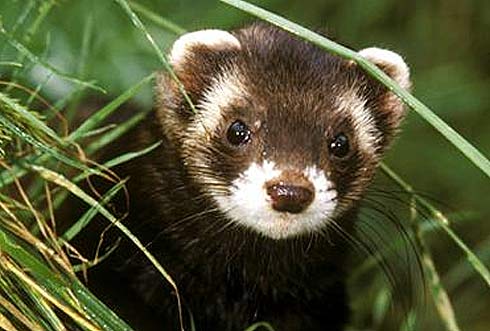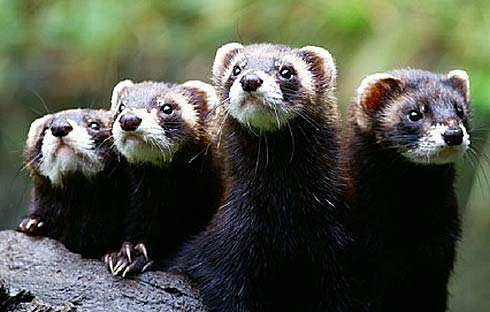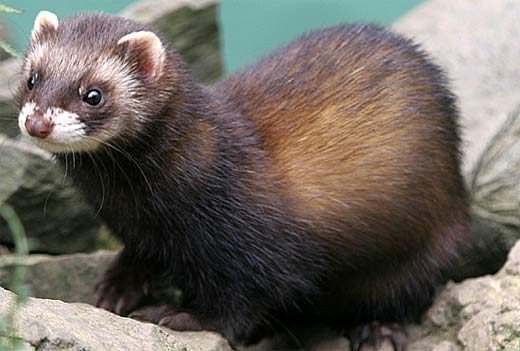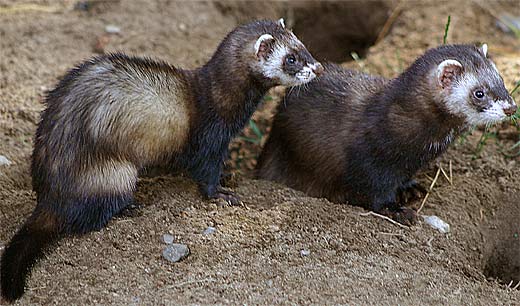Polecat – Euro-Stench Mustelid

The European polecat (sometimes called the black, or forest polecat) is a species in the mustelidae family that is quite similar to other ferrets, badgers and weasels. “European” is a pretty good descriptor of this particular polecat, as they live almost exclusively in Europe, but as far as the Asian border in Russia and just a bit off the coast of Spain in a small territory of North Africa. As an animal classed “Least Concern” by conservationist groups, you can imagine that these little critters are a very common sight all over the wilds of Europe. They look familiar to North Americans too as these cool “cats” are the only living evolutionary ancestor of the widespread common ferret.

You might think their name has something to do with use of tools, or a good sense of balance, but in fact “pole” is a modernization of a term from a few different languages – all of which were used by peoples to describe the awful stench of this animal. Despite their bad reputation and history of clashing with human populations, the European polecat has been kept as a pet, and in fact is reportedly easy to tame and breed in captivity. Their usefulness to humans does not end there, as their fur has traditionally been a major staple in the European fur trade, though recently it has fallen out of popularity. In earlier times, they were even bred as pest control, as they are good at chasing and catching all manner of small rodents and mammals.

Fact: polecats are generally as big as 20 inches (51cm) and can weigh just over 3 pounds at their heaviest. With a life expectancy of only 5 years, these ferret-like creatures have to accomplish a whole lot of living in a pretty short time.

